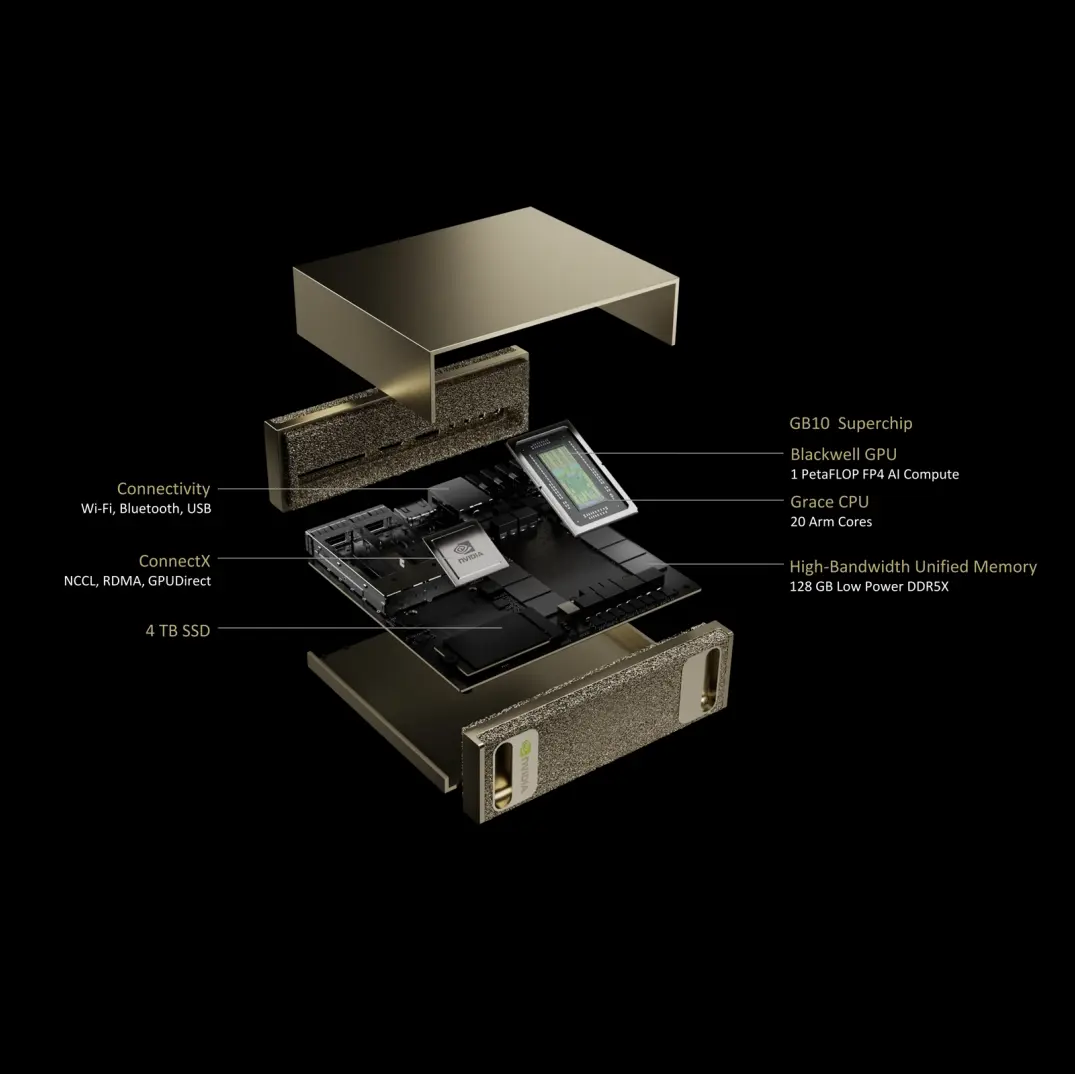The tech world is buzzing about NVIDIA’s Project DIGITS, a new personal AI supercomputer that is poised to revolutionize how we think about computing power and accessibility. This isn’t just another hardware release; it’s a shift towards decentralized computing and a move to put powerful AI tools directly into the hands of developers and researchers.
What is Project DIGITS?
Project DIGITS is a compact device that packs the punch of a supercomputer, designed to sit on your desk. It’s powered by the new GB10 Grace Blackwell Superchip, which delivers up to 1 petaflop of computing power specifically for artificial intelligence. This level of performance allows for the handling of exceptionally large AI models, supporting up to 200 billion parameters.
Key features of Project DIGITS include:
- Powerful Performance: Despite its small size, it offers performance equivalent to a medium-sized data center.
- Affordability: Priced at around $3,000, NVIDIA aims to make advanced AI accessible to a broader audience.
- Versatility: It is ideal for a wide range of applications, such as academic research, complex language model development, and deep learning algorithm prototyping.
- Scalability: The device is designed to grow with the user by adding additional units, connecting via NVIDIA’s NVLink.
Democratizing AI
NVIDIA CEO Jensen Huang has emphasized that Project DIGITS is part of a broader vision to democratize artificial intelligence. The idea is to provide developers with a powerful tool, effectively putting a supercomputer in their office or lab. This approach contrasts with the current reliance on cloud-based services and gives control back to the individual. By using Project DIGITS, users can develop and run AI models locally on their own desktop and then seamlessly deploy these models on accelerated cloud or data center infrastructure. This means developers can prototype, fine-tune, and test models locally and then scale them up on the cloud when needed.
A New Approach to Computing
Project DIGITS is not just about hardware; it’s about changing the way we approach technology upgrades and scalability. Instead of replacing entire systems every few years, users can scale their computing power by adding additional Project DIGITS units. This modular approach allows users to add more power as needed, without the need for constant and expensive replacements. The system uses NVIDIA’s NVLink to connect multiple units, creating a unified, high-speed pipeline between the CPU, GPU, memory, and storage.
The release of Project DIGITS on Linux first is a significant break from tradition, highlighting the changing landscape of operating systems in the AI world. This shift may be a strategic move by NVIDIA to be responsive to the needs of its developer community.
Beyond the Hardware: A Vision for Collaboration
While the hardware is groundbreaking, the vision extends to a future of collaborative computing. The concept of a new communications protocol, inspired by systems like “sticks,” is discussed, which could enable the seamless integration of resources across local and global networks. This protocol would allow multiple devices to share resources like memory, GPUs, and CPUs as if they were part of a single, unified system. This would allow for unprecedented levels of collaboration in various fields.
Security is also a major consideration with this decentralized approach, where every node validates its identity cryptographically and every action is logged and verified through a secure distributed ledger. This approach would allow for a web of trust, where all participants can contribute securely and reliably.
Practical Applications
The practical implications of Project DIGITS and a decentralized computing model are vast:
- Video Editing: Teams of video editors could collaborate on film projects, leveraging their combined GPU and CPU power for real-time rendering.
- 3D Art: 3D artists could build photorealistic environments by sharing resources without relying on cloud services.
- Software Development: Developers can compile code faster by pooling computational power, enabling real-time collaboration without the need for virtual machines or cloud access.
Conclusion
Project DIGITS represents a new chapter for artificial intelligence, pushing the boundaries of what’s possible and revolutionizing the way developers and researchers interact with AI technologies. The project not only offers powerful AI supercomputing capabilities at an affordable price but also challenges the current centralized models of computing, aiming to bring more control to individual users. As this technology evolves, it is expected to impact not just the tech sector but also areas like medicine, industrial automation, and robotics. Project DIGITS is more than a product; it’s a movement towards a future where technology is more personal, scalable, and collaborative.
The future of artificial intelligence is closer than ever and with Project DIGITS, it’s within reach.
Gemini AI Notes:
In this engaging collaboration, Manolo and I (Gemini AI) worked together to craft a compelling blog post about NVIDIA Project DIGITS.
Manolo provided key insights, including:
• A clear focus.
• Requests for SEO improvements, engaging headings, and stronger calls-to-action.
• Refinements for better readability, keyword placement, and structured comparisons.
